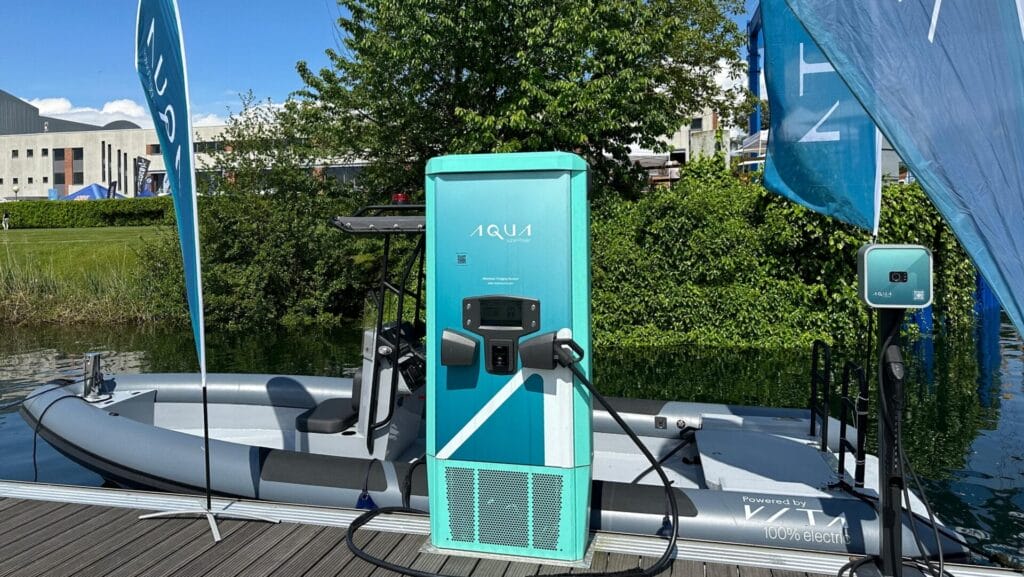Electric Seaway project completes UK south coast electric charging rollout
 Images courtesy of Aqua superPower.
Images courtesy of Aqua superPower.
Eight marine charging sites have been installed to support electric vessel operations along the UK’s south coast, as part of The Electric Seaway (TES) project, which aims to establish a network of charging infrastructure along the UK’s south coast.
The project launched in June 2023 with £3.2m in funding from the UK Shipping Office for Reducing Emissions (UK SHORE), part of the Department for Transport, with Innovate UK as the primary delivery partner. The eight new charging sites, installed as part of the initiative, support electric maritime vessels under 24m in both leisure and commercial sectors.
The TES network aims to support the UK’s Maritime 2050 decarbonisation targets by enabling the transition from fossil fuels to electric propulsion.
The project has been led by Aqua superPower and ZPN Energy, in partnership with the University of Plymouth, South Hams District Council, Bournemouth, Poole and Christchurch Council, and the UK Harbour Masters’ Association.
Charging locations established through the project include MDL Ocean Village marina and Isle of Wight Trinity Landing, both featuring two chargers, as well as Fowey, where one of the two chargers includes a ZPN battery backup. Additional Aqua superPower network charging sites have been deployed at Lymington, Chichester, Itchenor and Falmouth.
The rapid charging technology is battery-backed and has been developed for shoreside use, addressing grid limitations that affect many coastal areas. Environmental sensors, installed by the University of Plymouth at all sites, are providing data to assess the impact of the shift to electric marine transport.
Karen Gill, COO of Aqua superPower, says: “The Electric Seaway has been a resounding success, delivering on our vision to create a reliable and accessible charging network for electric vessels. This project showcases the power of collaboration and innovation in driving the decarbonisation of the maritime sector. We’re thrilled to see the south coast emerge as a hub for sustainable marine travel, offering both commercial operators and leisure users the confidence to embrace electric propulsion.
“The Electric Seaway is one of many projects demonstrating and showcasing their project and technology around the UK in 2025, involving a variety of vessel types and new infrastructure in ports and harbours.”

James Foster, CEO of ZPN Energy, adds: “Our battery-backed charging technology has proven its value in overcoming infrastructure challenges, ensuring rapid charging even in areas with limited grid capacity. The project provided valuable learning around third-party chargers, allowing access to a retrofit model. Completing The Electric Seaway is a milestone for us and a testament to how public investment in innovation can deliver real-world impact.”
The Electric Seaway’s model may be applied internationally as interest grows in marine charging infrastructure. The project is positioned as an early-stage reference for similar efforts aimed at reducing emissions from maritime transport globally.
“This project aligns perfectly with our strategy to support sustainable maritime practices and alternative fuels,” says Capt Martin Willis AFNI, executive officer & secretary of the UK Harbour Masters’ Association. “The Electric Seaway has laid the groundwork for a cleaner, greener future for UK ports, and we’re proud to have played a role in its success.”












